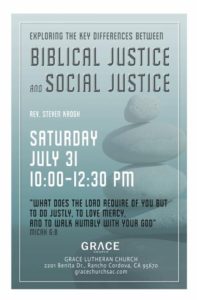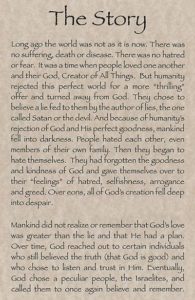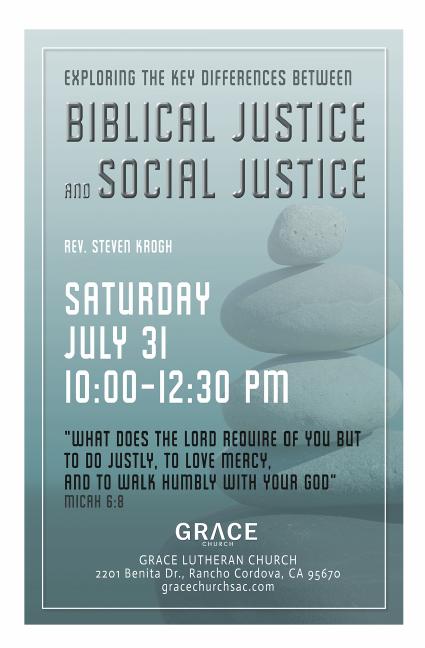The World View of “Social Justice”
The following guest article gives a historical world overview of todays Social Justice campaign as it is being played out in both the Black Lives Matter and Critical Race Theory movements throughout the country. It is well documented, accurate and thought provoking. I found it brings much needed clarity to what we are witnessing today. I recommend a careful reading and sharing of this important document. Bob
***************************************************
The World View of “Social Justice”
by Rev. Steven Krogh
Everyone has a world view. Each of us has a core understanding of who we are, our purpose in life and how we see the world. Our world view works as a “lens” through which we see the world. A common phrase denoting this way of thinking is, “Seeing the world through rose colored glasses.” Another way of thinking about world view is to compare it to a map. A map tells us where we are and how to get to the next place. Or we can consider our world view as a kind of puzzle. In putting a puzzle together, it is essential to have the original picture (probably on the box) so one can decipher what pieces go where. Without the original picture there is no reference to how all the individual pieces fit together to make a whole.
The easiest way to discover one’s world view is to ask four basic questions: Who am I? Why am I here? What’s wrong with the world? How can what is wrong be made right? To these questions, contemporary Social Justice, or more precisely Critical Social Justice, has very specific answers. However, to understand these answers one must know the origin of the concept of Critical Social Justice. The ideology behind Critical Social Justice can be traced all the way back to Karl Marx. Karl Marx saw the world (and human relationships in general) as a conflict between various people over limited resources. As such, Marx saw history as violently progressing through four stages: Ancient, Feudal, Capitalism and eventually Communism. For Marx, each stage of history was birthed by way of violent revolution. He believed that in his lifetime he was seeing the beginning stage of capitalism which would eventually be overthrown and replaced. Marx believed that capitalism would be toppled worldwide because of its innate oppressive nature. He was a staunch atheist whose world view affected the next generation of his followers.
For Marx, the answer to the question of “Who am I?” was found in the theory of evolution. This world view saw human beings as a product of random evolutionary processes. “From the goo, to you, by way of the zoo”. This atheistic world view led Marx to answer the next question, “Why am I here?” with another evolutionary conclusion: We are here to consume and enjoy. “Get all you can; can all you get; sit on the can.” The third world view question, “What is wrong with the world?” Marx answered with a two-part solution. Either 1) We are insufficiently educated or 2) We are insufficiently governed. For Marx, every social ill could be “fixed” by either more education or by creating larger government to address the problem. This was Marx’s answer to the fourth question, “How can what is wrong be made right?” This is the world view that Marx developed, embraced and taught. The next generation of Marxists would adopt this same world view while attempting to address the issue of why the “revolution” wasn’t happening worldwide.
Although revolution certainly happened in Russia and other parts of the world, it didn’t happen worldwide as Marx had thought. Hence, the next generation of Marxists would ask why not? Why wasn’t capitalism overthrown by the masses worldwide since capitalism was inherently oppressive? One voice that gave answer to this question was Antonio Gramsci. He developed the concept of “cultural hegemony”. Hegemony is defined as leadership or dominance, especially by one country or social group over others. According to Gramsci, cultural hegemony referred to a certain group within a culture that set the rules and social norms for society in order to keep the masses oppressed while promoting the hegemony’s own self interests. Another set of voices that answered Gramsci’s question was the Frankfurt School. This group of Marxist scholars started in Frankfurt Germany, moved for a short time to Switzerland and eventually landed at Columbia University in New York. The Frankfurt School developed a methodology (based on a Marxist world view) of analyzing society called “Critical Theory”. Critical Theory (based on a Marxist worldview) gave Critical Social Justice its worldview. Critical Theory also gave us political correctness and multi-culturalism.
The Marxist worldview and its subsequent Critical Theory worldview are diametrically opposed to Western Culture. To understand this opposition between Marxism and Western culture, we go back to the four questions.
Question One: Who am I? For Western Culture, the answer to this question is found in its Judeo/Christian histsory. Western culture views humankind as being made in God’s image. This means that every human life is sacred. It means every human life has dignity and a divine calling. According to Marx, however (and critical social justice), human life is easily dispensable, and it’s worth found only in how one serves the Marxist (Or Social Justice) ideology. This is why Communists will resort to killing millions of their own citizens “for the greater good”. This is also why Marxist language employs the phrase, “The ends justify the means.” in carrying out mass executions. In contrast, the Declaration of Independence (one of the founding documents of America) states that, “We hold these truths to be self-evident, that all men are created equal, that they are endowed by their Creator with certain unalienable Rights, that among these are life, liberty and the pursuit of happiness”. This is why the Critical Social Justice movement is antithetical to the Judeo/Christian worldview.
Question Two: Why am I here? For Western Culture, humanity’s purpose is to glorify our Creator and edify our fellow human beings. Our God-ordained purpose is to take care of God’s creation and each other as we were divinely appointed. This is why western culture values equality. The Judeo/Christian worldview sees everyone as made in God’s image and, therefore, every person deserves to be treated equally. For Critical Social Justice, however, human beings are here only to consume and enjoy. Critical Social justice being an atheistic ideology, sees humanity’s purpose in strict biological terms. There is no transcendent purpose to humanity. We are here solely to pursue pleasure and to consume. This is why critical social justice is obsessed with equity. Equity and equality are not the same. Basically, equity means that everyone should have the same stuff. Equality, however, means that everyone has the same opportunity. The goal of critical social justice is to forcibly create a society in which everyone has to have the exact same everything as everyone else.
Question Three and Four: What’s wrong with the world? How can what is wrong be made right? For Western Culture, what’s wrong with the world is that humanity does not do what they were divinely created to do . . . give praise and glory to the Creator. Tragically, humanity has turned away from God to serve themselves and not their creator. This state of brokenness is called “sin”. And the remedy for “sin” according to Christian thought is realized through the person and work of Jesus Christ. For Jews, the “sin” solution is found through observance of Judaic law. Critical Social Justice, in contrast, sees the problems of the world as stemming from either insufficient education or insufficient government. For Marxists and their ideological grandchildren, social- justice adherents, the only way to solve the world’s problems is through more education (as if educated people can never do bad things) or more government involvement (as if government is the solution to every problem).
There is much more to the worldview of critical social justice. It has taken a few generations to develop to what it is today. Hopefully this brief overview will help give a more general understanding of what is currently being played out within today’s culture.
Follow-up
The flyer below is for an in depth seminar on this subject to be held on July 31, 2021. Following the seminar I will provide a link to the video presentation on this site. Please check back after that date for the link. Thank you.





would love to perpetually get updated great blog! .
1Way cool! Some very valid points! I appreciate you penning this write-up and also the rest of the site is also really good.
2Spot on with this write-up, I honestly believe that this amazing site needs far more attention. I’ll probably be returning to read more, thanks for the information!
3Way cool! Some very valid points! I appreciate you writing this write-up and the rest of the website is extremely good.
4Hi, I do think this is an excellent web site. I stumbledupon it 😉 I am going to come back yet again since i have book-marked it. Money and freedom is the best way to change, may you be rich and continue to help others.
5Can I simply say what a relief to seek out someone who really knows what theyre speaking about on the internet. You definitely know the right way to carry a problem to light and make it important. More folks have to learn this and perceive this aspect of the story. I cant consider youre no more standard since you positively have the gift.
6Hi, I do believe this is an excellent website. I stumbledupon it 😉 I’m going to come back once again since I saved as a favorite it. Money and freedom is the greatest way to change, may you be rich and continue to guide others.
7I believe you have remarked some very interesting details , regards for the post.
8